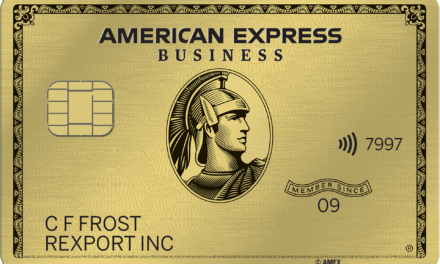When I first became interested in points and miles, the Chase Sapphire Preferred was the one credit card that I really wanted to get. As a recent college grad, I wanted to travel for as little as possible. The Sapphire Preferred was the only way to get discounted flights and hotel rooms with transfer partners that I was already familiar with. The sleek metal card was also very appealing.
Since then, the card has been eclipsed by the Sapphire Reserve in one of the biggest points and miles frenzies in recent times. Despite the popularity of its bigger sibling, the Sapphire Preferred remains a great alternative for all travelers.
Earning
Chase is offering a sign-up bonus worth 80,000 Ultimate Rewards (UR) points for the Sapphire Preferred. This bonus can be earned after spending $4,000 within the first three months. It also has an annual fee of $95 (NOT waived the first year). This sign-up bonus is one of the biggest among Chase’s UR point-earning cards.
Furthermore, the Sapphire Preferred earns 5x UR points on travel purchased through the Chase Ultimate Rewards portal. It earns 3x UR points per dollar on dining, select streaming services, and online grocery expenses. It also earns 2x UR points on general travel expenses and just one point for all other purchases. Chase has a broad list of what is included in the travel and dining categories. Some travel purchases that I have made that earned bonus points in the past include airfare, hotel stays, a car rental, and toll road fees. Dining purchases include restaurants, coffee shops, and bars.
The Sapphire Preferred is nice by itself, but its potential can be maximized if you have multiple Chase UR-earning cards. You can earn even more points if you have a Freedom Card and/or an Ink Business Card. Thereafter, you can transfer them to your Sapphire Preferred account. This feature is arguably the most powerful that Chase has to offer as it’s the lifeblood of many people’s earning strategies.
Burning
Earning points is fantastic, but points earned are useless if you cannot redeem them for anything of value. Chase has multiple options for redemption:
Transfer Partners
Transfer partners are by far Chase’s most valuable option. They are the reason why so many points and miles enthusiasts love the Ultimate Rewards family of credit cards so much. With Chase, the name of the game is quality over quantity. Chase has the following transfer partners:
Hotels
- IHG
- Marriott
- World of Hyatt
Airlines
- Aer Lingus
- Air Canada
- British Airways
- Emirates
- Iberia
- JetBlue
- KLM Flying Blue / Air France
- Singapore Airlines
- Southwest Airlines
- United Airlines
- Virgin Atlantic
Your mileage may vary. But you should be able to easily redeem your points for at least 1.5 cents per point (CPP) with most partners. For example, I used my Sapphire Preferred (which has since been upgraded) to send my mom to Arizona on Southwest. I redeemed 17,000 points for a $300 round-trip economy flight on Southwest, a 1.75 CPP redemption. Thanks to Chase and Southwest, my mom had a great time visiting our extended family and celebrating a family friend’s birthday party. She made many great memories in the process.
Other Options
Chase also provides cardholders the option of booking travel through its own travel portal at a fixed rate of 1.25 CPP. You should use the portal if you cannot redeem your points for more than the fixed rate.
In 2020, Chase introduced its newest redemption option: Pay Yourself Back. This method lets cardholders redeem UR points towards gas and grocery expenses at a rate of 1.25 CPP. This is a nice alternative to the Chase Travel Portal, especially during the COVID-19 pandemic.
Chase also lets cardholders redeem their points for cash back and gift cards at 1 CPP. Sometimes, Chase discounts some of their gift card options, enabling cardholders to redeem for more than 1 CPP. Neither cash back or gift cards are recommended. Furthermore, the Chase Sapphire Preferred is probably not for you if cash back is more attractive than points.
Benefits
Chase includes many great benefits to make life easier when away from home. Some of them can even justify the $95 annual fee with enough use.
Primary Car Rental Insurance
This benefit covers the entire loss, damage, or theft of your car rental. You don’t have to accept your car rental company’s insurance policy if you use your Sapphire Preferred to pay for the rental.
Chase is the only credit card issuer to offer primary car rental insurance. This perk alone makes Chase’s premium cards attractive for many travelers. For comparison, American Express has secondary coverage on only some of their cards.
No Foreign Exchange Fees
While these fees are becoming less common every year, the Sapphire Preferred was one of the first cards to do without them. You will save 3% on all purchases made outside the United States with the card.
Trip Cancellation / Trip Interruption Insurance
This benefit gives you up to $10,000 per trip for non-refundable expenses. It comes in handy If you need to cancel your trip because of an unexpected event. Plane tickets, hotel rooms, and tours are included.
Trip Delay Insurance
This benefit covers you up to $500 per ticket if your plane, train, or other common carrier is delayed at least 12 hours. It also kicks in if you require an overnight stay as a result of a delay. The $500 helps cover un-reimbursed expenses such as meals and lodging.
Baggage Delay Insurance
This benefit gives you $100 per day up to 5 days if your luggage is lost or delayed. If your luggage is delayed for more than 6 hours, you can redeem for toiletries, clothing, and other essentials.
Purchase Protection
This benefit covers new purchases up to 120 days against damage or theft. There is a maximum of $10,000 per claim and $50,000 per calendar year. Nonetheless, having purchase protection makes using the Sapphire Preferred for major purchases that can break a wise decision.
Extended Warranty
This perk extends the time period of a product’s manufacturer’s warranty by an additional year. Eligible warranties of three years or less are included.
$50 Annual Hotel Credit
Sapphire Preferred cardholders will also receive a $50 hotel credit when hotel stays are purchased through the Chase travel portal. This is a nice way to offset part of the card’s annual fee
Rules & Regulations
Chase has two major rules in place to prevent “churners” from scoring their sign-up bonuses too many times. These rules are the 5/24 Rule and the One Sapphire Rule.
The 5/24 rule states that you will not be approved for any UR-earning card if you were approved for five or more new accounts in the last 24-months. Some Chase co-branded cards also fall under this rule as well.
The One Sapphire Rule states that your will not be approved for the Sapphire Preferred or Sapphire Reserve if you received a sign-up bonus within the last 48 months. It also applies to the discontinued no annual fee Sapphire card.
Similar Cards
Chase Sapphire Reserve
The Chase Sapphire Reserve is the Sapphire Preferred card’s “big sibling”. It earns UR points in the same bonus categories, but at higher rates. For example, the Sapphire Reserve earns 10x points per dollar on dining and hotel stays purchased from the Chase travel portal. It also earns 5x points per dollar on airfare purchased through the portal. Dining and general travel purchases that are not purchased through the portal earn 3x points and all other purchases earn just one point per dollar.
It also has a $550 annual fee (NOT waived the first year). But the fee is offset by a $300 annual general travel credit. Therefore, you’re really paying a “net annual fee” of $250.
For $250 per year, you’re also getting slightly better versions of the Preferred Card’s travel insurances. You also have access to the same travel partners and other redemption options as the Sapphire Preferred. Plus, the Sapphire Reserve offers other benefits including Lyft Membership, Door Dash credits, SBE hotel benefits, and Priority Pass airport lounge access.
Chase is offering a sign-up bonus worth 50,000 points for the Sapphire Reserve. It can be earned after spending $4,000 within the first three months. The Preferred has a slightly bigger bonus than the Reserve. But Chase has done that to compensate for the Preferred Card’s earning structure and to attract more prospective cardholders.
Furthermore, the Sapphire Reserve has a minimum credit limit of $10,000 because its a Visa Infinite card. This is not the case for the Sapphire Preferred. It has a minimum limit of $5,000 as a Visa Signature. The Preferred card’s lower limit makes for an easier approval than the Reserve.
American Express Green Card
The American Express Green Card earns Membership Rewards (MR) points. You will earn 3x MR points on general travel and dining and one point per dollar on non-bonus spend. Fortunately, American Express’ definition of “travel” is broad for the Green Card. You can earn 3x points on hotels, airfare, ride sharing, taxis, subways, tolls, and more.
Furthermore, the Green Card has a $150 annual fee (NOT waived the first year). Amex is also offering a sign-up bonus worth 45,000 MR points, which can be earned after spending $2,000 within the first three months.
The Green Card also comes with a $100 credit for Lounge Buddy and a $100 credit for CLEAR every year. The former credit might be useful for those who do not have a premium card or membership to Priority Pass.
The Green Card is the better earner, but it has a higher annual fee and a different set of transfer partners. But the Sapphire Preferred has the higher sign-up bonus and access to Chase’s Travel Portal and transfer partners.
Citi Premier
This Citi Premier is a great travel card that earns Citi Thank You (TY) points. Its value truly lies in its earning potential. It earns 3x TY points on five categories: airfare, dining, gas, groceries, and hotels. This five-category earning structure is one of the best among mid-tier travel cards. Therefore, the Citi Premier is a stronger earner than the Sapphire Preferred, especially for international travelers. However, domestic flyers and hotel dwellers might like the Sapphire Preferred more.
Like the Sapphire Preferred, this card has a $95 annual fee (NOT waived the first year). Citi is also offering a sign-up bonus worth 60,000 TY points, which can be earned by spending $4,000 within the first three months.
The Sapphire Preferred is the better card for those who want travel benefits and insurances. This is because Citi dropped all the benefits from their cards in September 2019. Unfortunately, the Citi Premier was one of the biggest victims.
Final Draw
The Chase Sapphire Preferred has been on the market since 2009. Since its introduction, this card remains a balanced and well thought out stalwart, especially for those with low travel and dining spend, as well as those who are new to points and miles.
The Sapphire Preferred was my first true foray into the points and miles world. It’s one of my favorite cards for those who are starting out.
Apply Today: Chase Sapphire Preferred





[…] https://travelupdate.com/review-chase-sapphire-preferred/ […]